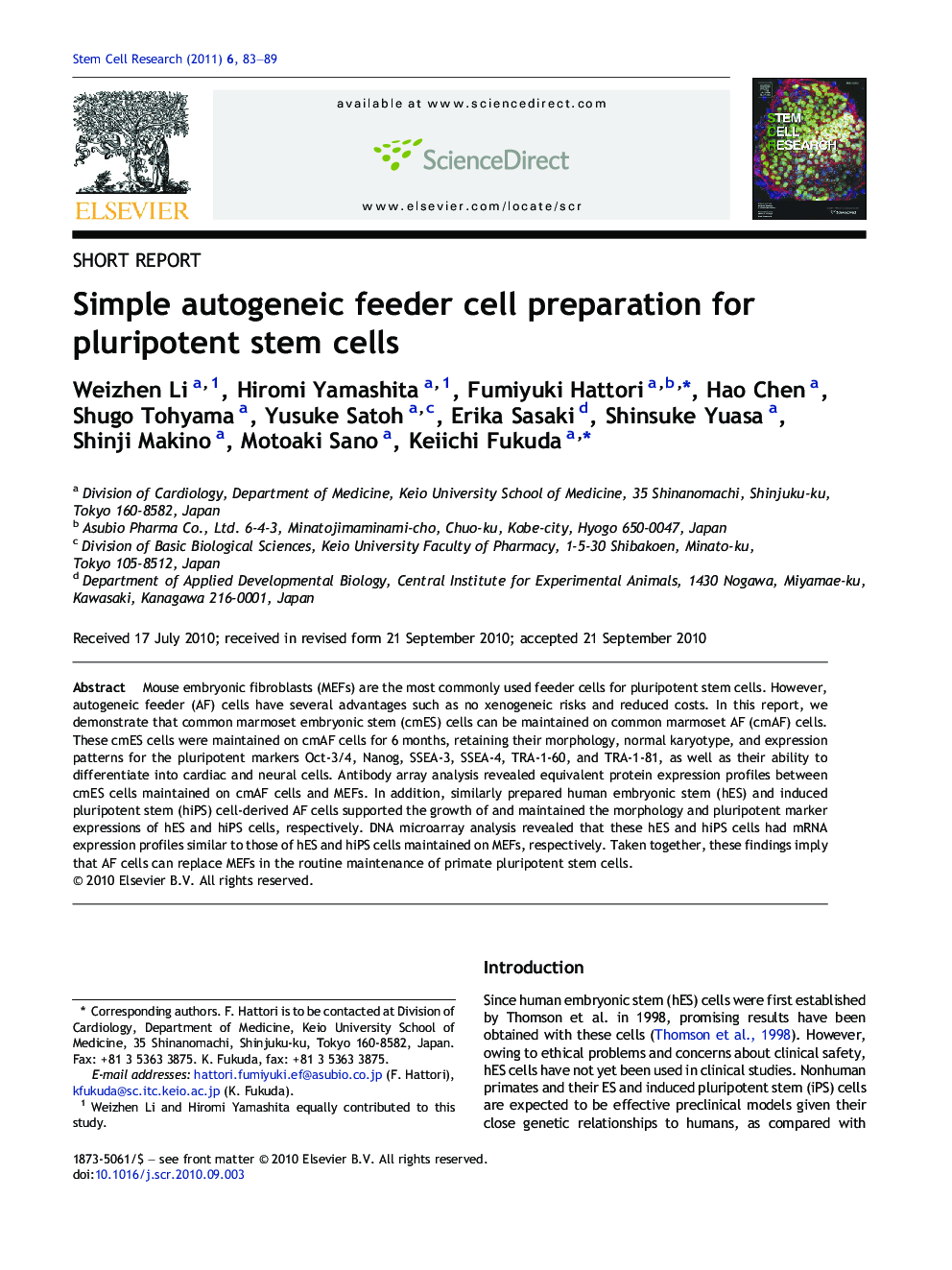| Article ID | Journal | Published Year | Pages | File Type |
|---|---|---|---|---|
| 10891351 | Stem Cell Research | 2011 | 7 Pages |
Abstract
Mouse embryonic fibroblasts (MEFs) are the most commonly used feeder cells for pluripotent stem cells. However, autogeneic feeder (AF) cells have several advantages such as no xenogeneic risks and reduced costs. In this report, we demonstrate that common marmoset embryonic stem (cmES) cells can be maintained on common marmoset AF (cmAF) cells. These cmES cells were maintained on cmAF cells for 6Â months, retaining their morphology, normal karyotype, and expression patterns for the pluripotent markers Oct-3/4, Nanog, SSEA-3, SSEA-4, TRA-1-60, and TRA-1-81, as well as their ability to differentiate into cardiac and neural cells. Antibody array analysis revealed equivalent protein expression profiles between cmES cells maintained on cmAF cells and MEFs. In addition, similarly prepared human embryonic stem (hES) and induced pluripotent stem (hiPS) cell-derived AF cells supported the growth of and maintained the morphology and pluripotent marker expressions of hES and hiPS cells, respectively. DNA microarray analysis revealed that these hES and hiPS cells had mRNA expression profiles similar to those of hES and hiPS cells maintained on MEFs, respectively. Taken together, these findings imply that AF cells can replace MEFs in the routine maintenance of primate pluripotent stem cells.
Related Topics
Life Sciences
Biochemistry, Genetics and Molecular Biology
Biotechnology
Authors
Weizhen Li, Hiromi Yamashita, Fumiyuki Hattori, Hao Chen, Shugo Tohyama, Yusuke Satoh, Erika Sasaki, Shinsuke Yuasa, Shinji Makino, Motoaki Sano, Keiichi Fukuda,
